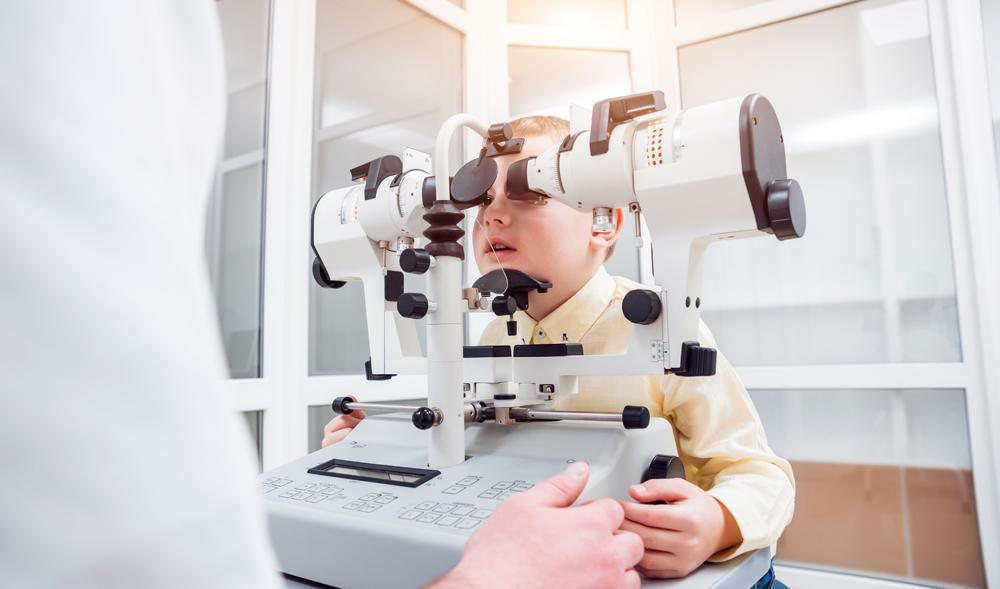Checking Out the Cutting-Edge Technologies Used for Vision Adjustment
In the ever-evolving landscape of vision improvement innovations, a world where development and accuracy converge, a myriad of innovative advancements have improved the possibilities for improving aesthetic skill. From the elaborate world of advanced laser procedures to the world of artificial intelligence applications and genetics treatment advancements, the area proceeds to push boundaries and redefine what was when believed to be unattainable. With each innovation comes the prospective to change how we view and resolve vision-related challenges, providing an alluring glance into a future where clarity and precision preponderate.
Advanced Laser Treatments

Another innovative laser treatment gaining popularity is PRK (Photorefractive Keratectomy) This method entails removing the outer layer of the cornea before reshaping it with a laser. While the healing time for PRK is much longer contrasted to LASIK, it can be a better choice for people with slim corneas or various other corneal abnormalities. Both LASIK and PRK have high success prices in improving vision and are considered risk-free and trusted methods for vision adjustment.

Implantable Instruments Innovation
Advancements in implantable tools are improving the landscape of vision correction, providing brand-new opportunities for individuals seeking long-term remedies to refractive errors. These advanced tools, such as phakic intraocular lenses (IOLs) and implantable collamer lenses (ICLs), are made to correct a vast array of refractive mistakes, consisting of nearsightedness, hyperopia, and astigmatism. Unlike typical glasses or call lenses, implantable tools provide a more permanent solution by being placed inside the eye to fix vision.

Wavefront Innovation Enhancements
The advancement of wavefront innovation in vision adjustment has reinvented the accuracy and personalization of refractive treatments. By using innovative click here for info wavefront sensing units, this technology permits a detailed evaluation of the eye's special aberrations, allowing eye doctors to customize therapies with extraordinary precision. Wavefront-guided LASIK, as an example, surpasses typical approaches by resolving not just usual refractive mistakes like nearsightedness, farsightedness, and astigmatism yet additionally higher-order aberrations that can influence aesthetic top quality.
Additionally, constant improvements in wavefront modern technology have actually led to improved diagnostic abilities, allowing for a lot more exact pre-operative assessments and post-operative assessments to keep track of the efficiency of the procedure. Overall, these improvements in wavefront innovation have significantly added to the refinement and efficiency of vision modification treatments, offering people a greater level of aesthetic acuity and quality post-treatment.
Artificial Intelligence Applications
With the development of wavefront modern technology in vision adjustment leading the means for tailored therapies, the assimilation of man-made intelligence applications is now poised to more enhance precision and efficiency in refractive procedures. Synthetic knowledge (AI) brings a brand-new level of elegance to the area by assessing substantial quantities of information to enhance decision-making processes throughout vision adjustment surgical procedures. AI formulas can aid eye doctors in pre-operative preparation by anticipating the optimum treatment criteria based on specific client data, such as corneal density, refractive mistake, and various other relevant variables. During the operation, AI can dynamically change treatment specifications in real-time, optimizing other the accuracy of the correction. Additionally, post-operative surveillance and adjustment can likewise profit from AI applications, guaranteeing better outcomes and decreased dangers of problems. By leveraging AI in vision improvement treatments, eye doctors can supply patients personalized therapies that are not only more specific however additionally tailored to their unique aesthetic needs, inevitably resulting in boosted client complete satisfaction and aesthetic outcomes.
Gene Therapy Innovations
Current advancements in gene therapy have ushered in a new age of accuracy medication, changing the landscape of clinical therapies. In the world of vision improvement, genetics treatment breakthroughs offer promising solutions for various genetic eye disorders. By targeting particular genes in charge of conditions like retinitis pigmentosa, Leber congenital amaurosis, and other genetic retinal conditions, genetics treatment intends to attend to the origin triggers of these problems at a molecular degree.
One significant development in genetics therapy for vision adjustment is Luxturna, approved by the go to my blog FDA in 2017. Luxturna is a pioneering genetics therapy treatment for people with inherited retinal diseases brought on by anomalies in the RPE65 genetics. With the shipment of a functional duplicate of the RPE65 genetics into retinal cells, Luxturna has revealed considerable enhancements in vision for patients with these hereditary problems.
As research in genetics treatment continues to advance, the possibility for customized treatments for a series of hereditary eye conditions expands greatly, using hope for improved vision end results and high quality of life for affected people.
Conclusion
Finally, the visual field adjustment is constantly advancing with making use of cutting-edge technologies such as innovative laser procedures, implantable tools, wavefront technology, fabricated intelligence, and genetics therapy. retina service near me. These technologies have changed the way vision concerns are addressed, using more exact and reliable services for people. As technology remains to advance, we can expect also more developments in the future that will certainly further enhance the top quality of vision adjustment therapies